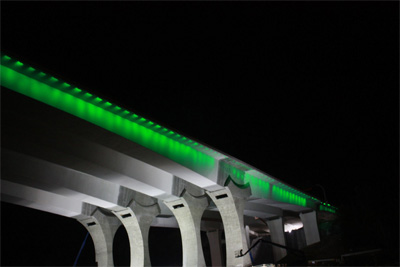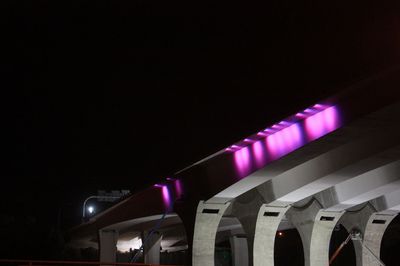1) THE PEOPLE LEFT WORKING
Millions of people have lost their jobs in the economic collapse of the United States, but what about the people who didn’t? What about the people left behind?
They’re working harder, often for less, trying to pick up the additional work created by downsizing.
Mother Jones magazine considers the plight of the worker still working…
“I am exhausted,” said a “part time” college instructor in Illinois. “I can’t help my son with his homework because I am grading papers until late into the night. I get up very early during the week, skip lunch to save not money but time, and the workload never lets up. My employer uses and abuses full-time employees even more so than those of us that are hourly. My supervisor, for example, runs a large department. He was just promoted to a new, even more demanding position, but his position running the department will not be filled. He will now be doing what is a 60-to-70-hour job ‘on the side.’ I can’t complain of overwork, because everyone is competing to get enough classes to pay the bills. If you lose a class, you lose a chunk of your paycheck. If we can’t handle it, the class can always be given to another teacher who will be desperate for the work or money.”
The magazine also says while men are picking up a greater share of at-home functions, it’s still women who are doing most of it …

Twenty-two percent of those surveyed say they’re expected to respond to work-related e-mails when they’re not working. A third check their work e-mail while on vacation.
What’s happening here? Let’s talk. What’s your experience in the workplace? And how are you squaring it with your non-work hours in which you find yourself working? And how much of your increased non-working-hours workload are the result of actual employer pressure and how much is self-imposed?
2) BEAUTY AND THE BRIDGE
The “new” I-35W is all Minnesota. It’s not particularly flashy, it gets the job done, but it’s beautiful, especially at night. The bridge could be Minneapolis’ Empire State Building, which uses its lighting for themes. New Year’s Eve? It’s all white (snow). Valentine’s Day? Red, of course. And when a visiting foreign dignitary is in the city, the colors are often based on that country’s flag.
When the I-35W bridge was built, designers gave it this capability and on Friday, the city — thanks to MnDOT — will get around to using it. It’ll be lit in a rainbow to mark this weekend’s Pride Festival in the city. John Weeks, who wrote a fine article on the bridge lighting, reports it was lit in pink at least once to promote breast cancer awareness.
Our friend, Paul Weimer, has some of the few images of the bridge in a color other than its traditional blue, taken in 2008 when the lightning system was being tested.

(Image from Paul Weimer via Flickr)
September 1978
It was a good move by Pride organizers to ask that the bridge be lit appropriately this weekend. What do you say we do it more often, Minneapolis?
3) SURGING TOWARD MINOT
Water broke through the dikes in Minot overnight and the heartbreak is on. It’s already a record flood on the Souris River and it’s going to get 7 feet higher soon. For many people, there’ll be nothing left when — if — they return.
Here’s the Fargo Forum’s collection …
Flood water is being released by the Army Corps of Engineers from Lake Darling upstream. A surge will hit Minot today. “It will be dramatic,” an Army official said.
We should be getting into the dry season now when water tables begin to drop, accommodating rain later in the year and snowmelt next spring. That obviously isn’t happening and one wonders what the impact will be on next spring’s flood season in the Upper Midwest.
Kathryn Draeger notices the difference in the way things are around her farm this year, in the area of Minnesota once known as “The Dismal Swamp,” she says:
I don’t have much of a historical perspective, as our first field season on the farm was 2008. But this land looks different than I’ve ever seen it. It is soaking wet lushness of grasses and tress. Different flowers growing in the roadsides than I’ve seen.
Overheard at a watershed meeting in Big Stone County this week. The ditches are running full (engineered estimated flows supposed to be 10 inches, currently running for the past month at 44 inches), backing up onto farmland. Crops unplanted– those planted underwater. When the guest farmer sitting at the table was asked what he’s doing about it, he put his hand over his heart, head downcast, and says ‘it makes a man go numb.’ It’s just too much to take in. Too overwhelming to rally a response.
He spoke for many farmers and others. For those who’s very being is linked to the land and the water. For those who know what mercy- being at mercy really means.
4) MOBILE PHONE DANGERS BY THE NUMBERS
“If we are going to worry about uncertain risks, there’s a lot to worry about,” Michael Blastland says. He writes the Go Figure column for the BBC and today he’s taking on those warnings that cellphone use may increase the risk of health probems.
There are 5 million known chemicals in the world, he says, and 30 have been definitely linked to cancer in humans. Seven thousand have been tested. “The rest is darkness,” he says. And that’s where your attitude toward the unknown comes in:
We’d probably have an idea by now if any risk attached to mobile phones was big (unless the damage waits for old age). We haven’t found it despite looking pretty hard.
Brain cancer is rare, about 10 cases in every 100,000 people. Let’s say heavy mobile phone use doubles that risk over 20 years. Not true, so far as we know, but let’s run with it. That would mean that among 100,000 heavy phone users, the number of brain cancers would rise from 10 in 100,000 to 20 in 100,000.
Does that reassure you? Or by failing to rule out a risk of unknown size, has it simply raised your suspicions?
5) QUOTH THE RAVEN: “POTTERMORE”
The big story today is Pottermore. J.K. Rowling took to the Web today to announce an “online reading experience…”
Business Insider parses the statement and says the real story is Rowling is cutting out Amazon and other booksellers by being the exclusive seller of Harry Potter books.
Bonus: Shooting bears. File this under “cool.”
Worth considering? Dale Connelly wonders what would happen if the state’s politicians actually were locked in a room until they reached an agreement?
TODAY’S QUESTION
Last night, President Obama announced an Afghanistan strategy that reduces troop strength faster than some in his administration would like. Today’s Question: What do you think of the president’s plan for withdrawing troops from Afghanistan?
WHAT WE’RE DOING
Midmorning (9-11 a.m.) – First hour: Deconstructing last night’s Afghanistan speech from President Obama.
Second hour: The science, and the secrets contained, by the world’s most famous mummies.
Midday (11 a.m. – 1 p.m.) – First hour: DFL legislative leaders Tom Bakk and Paul Thissen discuss the state’s budget mess.
Second hour: Former President Jimmy Carter talks to Ray Suarez of PBS about his book, “White House Diary.”
Talk of the Nation (1-3 p.m.) – First hour: Rethinking the rules of commercial fishing.
Second hour: The cost of sex trafficking and the price of sex.
All Things Considered (3-6:30 p.m.) – Every day, supermarkets cull their shelves, tossing out expired food. That’s part of why Americans waste about 150 billion pounds of food each year. But not all of that food is spoiled. NPR will report on a new initiative from Wal-Mart and Feeding America to take food that might otherwise be wasted and give it to the hungry.


